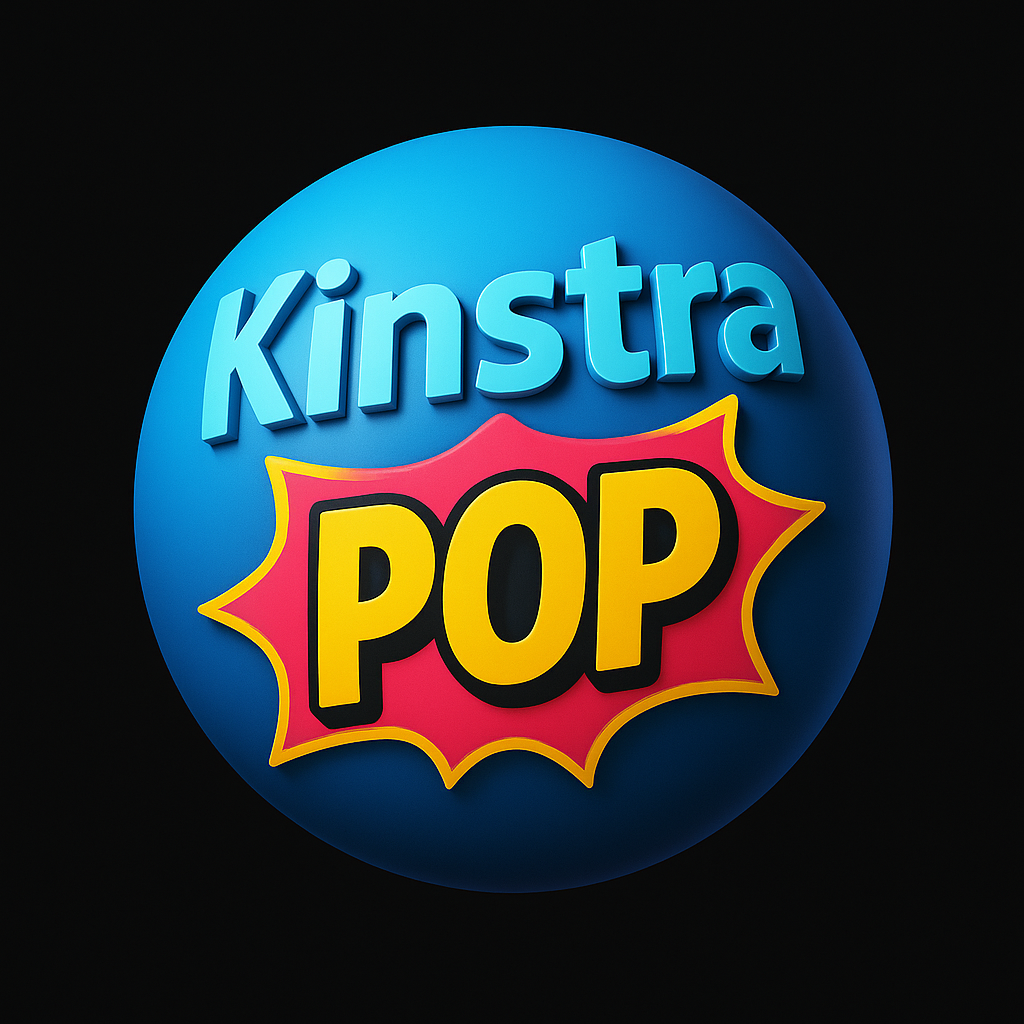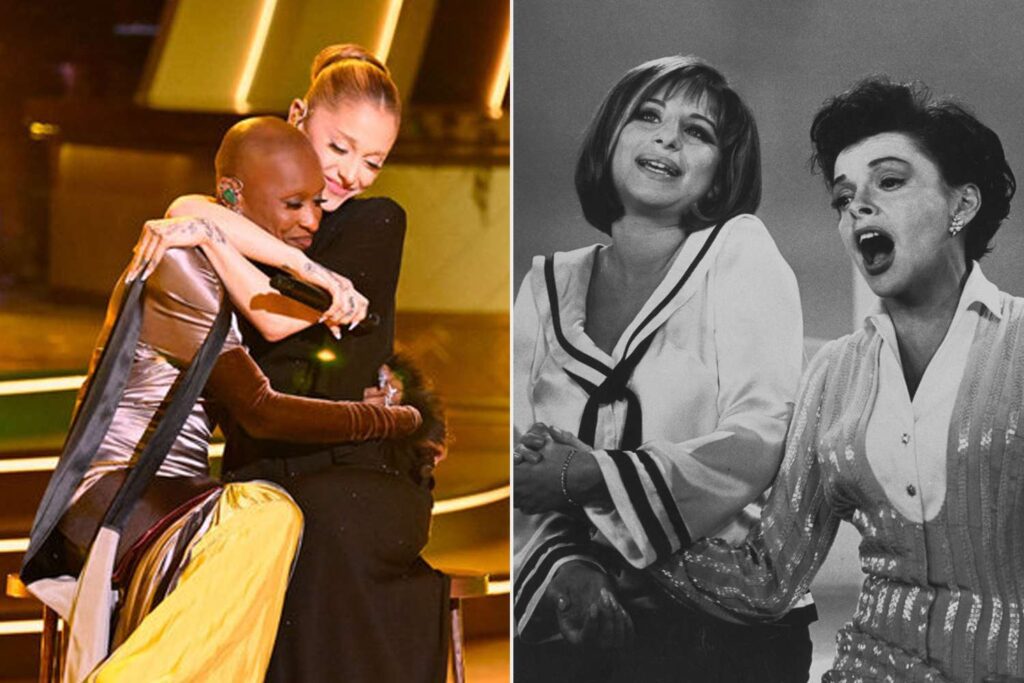NEED TO KNOW
Happy days are here again, indeed.
Ariana Grande and Cynthia Erivo surprised audiences tuning into Wicked: One Wonderful Night on NBC Thursday, Nov. 6, by ending the broadcast with a new but storied duet.
The Oscar nominees and Grammy winners sang a medley of two classic tunes from opposite ends of the Great American Songbook: “Happy Days Are Here Again” and “Get Happy.” The iconic medley was originally sung by none other than Dorothy Gale herself, Judy Garland, and funny lady Barbra Streisand during Garland’s eponymous variety show in October 1963.
In fact, as Grande (32) and Erivo (38) told Wicked fans during the Wicked: One Wonderful Night taping at Hollywood’s Dolby Theatre, they sang the medley twice simply because they wanted to. “Is that OK?” Grande asked the boisterous crowd, who quickly met the pop star’s request for an encore with rapturous applause.
Of course, long before Grande and Erivo paid homage to Garland and Streisand’s “Get Happy/Happy Days Are Here Again” medley — and before Garland and Streisand made the mash-up — the individual songs already had long lives of their own.
Otto Dyar/Mgm/Kobal/Shutterstock
A Medley in the Making
“Get Happy” was written by Harold Arlen and Ted Koehler in 1930 and introduced by Ruth Etting in The Nine-Fifteen Revue. A jazzy gospel number, Garland turned the tune into a showstopper 20 years later in her 1950 film Summer Stock, performing it in a black fedora and tuxedo jacket over short shorts (a look that became one of her most enduring images).
“Happy Days Are Here Again,” composed by Milton Ager and Jack Yellen in 1929, was first heard in the MGM musical Chasing Rainbows as performed by Leo Reisman and his orchestra, with vocals by Lou Levin. Years later, the song gained prominence as a Depression-era anthem of hope when Franklin D. Roosevelt famously used it in his 1932 presidential campaign.
By the time Streisand got hold of it three decades later, listeners were used to hearing “Happy Days Are Here Again” performed at a brisk pace. But she notably turned the song’s bright optimism on its side with a slow, dramatic arrangement by George Williams and a vocal that highlighted her masterful delivery of the tune’s emotional lyrics. The recording became her first commercial single in 1962.
Underwood Archives/Getty
“Hello, gorgeous”: Barbra Meets Judy
When Garland invited a young Streisand to appear on The Judy Garland Show a year later in 1963, no one could have predicted the television magic that would follow.
The variety show was still finding its footing on CBS, struggling to attract audiences as Garland’s star was fading. But the actress and singer had taken notice of Streisand, whose Broadway debut in I Can Get It for You Wholesale and first solo album had earned rave reviews. So when Streisand was invited to appear as a guest, Garland had an inspired idea.
As Garland’s musical director Mel Tormé recalled in his book The Other Side of the Rainbow, Garland called him into her dressing room and played Streisand’s record of “Happy Days Are Here Again” while singing a slower counter-melody of her signature “Get Happy.”
“The result was electrifying,” Tormé wrote, “One of those chance discoveries in which two great songs jell into one extra-special opus,.”
Needless to say, the audience had no idea of the historic moment that was about to unfold as the segment began.
On the broadcast, a 41-year-old Garland introduced a 21-year-old Streisand to audiences, praising her voice. “You’re so thrilling, so absolutely thrilling,” said Garland. “We’ve got all your albums at home, you know. And you’re so good that I hate you, I really hate you. You’re so good!”
“Aw Judy, thank you,” Streisand responded. “You know, you’re so great that I’ve been hating you for years. In fact, it’s my ambition to be great enough to be hated by as many singers as you! … Don’t stop hating me, I need the confidence!”
Mediapunch/Shutterstock
The two then launched into the number. Garland — in her trademark, gospel-tinged vitality — kicked it off with the opening lines of “Get Happy,” slowed down to match the pacing of Streisand’s silky, haunting delivery of “Happy Days Are Here Again.” Gradually, their melodies intertwined — Garland rising higher, Streisand dropping lower — until they met in glorious harmony on the final note.
The mashup lasted barely three minutes, but its impact has echoed for decades. To this day, it’s celebrated as one of the most iconic musical pairings ever captured on television — a shimmering handoff between generations and a snapshot of two powerhouse voices meeting in perfect harmony.
Immediately, critics embraced the duet, hailing it as the highlight of Garland’s variety series. But in retrospect, the moment has come to mean so much more than just a great performance. Historians have treasured the pop culture touchstone as a rare meeting between eras: Garland — a survivor of the Hollywood studio system who had been performing since childhood — came face-to-face with Streisand, an embodiment of the modern age: unpolished, unconventional, yet breathtakingly confident.
This wasn’t just an anthem of resilience and joy; this was about the power of two women, decades apart, finding common ground in song.
Legacy
Over the years, the “Get Happy/Happy Days Are Here Again” clip has been preserved and the duet has lived on through countless tributes, with Broadway legends like Audra McDonald and Patti LuPone recreating the medley in homage. Streisand included the track on her 1991 box set Just for the Record.., and later on her 2002 Duets compilation, while Garland’s daughters Liza Minnelli and Lorna Luft sweetly sang the medley in 1975.
Television revived it in 2010 when Glee’s Lea Michele and Chris Colfer performed their own version, echoing the Garland-Streisand arrangement for a new generation. Jennifer Lopez is also among the stars who have given their own spin on “Get Happy/Happy Days Are Here Again.”
Streisand opened up about the history-making duet in her 2023 autobiography, My Name Is Barbra. “People were looking for some sort of rivalry between us,” she wrote of Garland. “And when they couldn’t find anything, they made it up.”
Garland, she wrote, “wasn’t just focused on herself” when they performed their medley. “She watched me and responded to me,” Streisand recalled. “She would reach out and brush back a strand of my hair, like a mother.”
Never miss a story — sign up for PEOPLE’s free daily newsletter to stay up-to-date on the best of what PEOPLE has to offer, from celebrity news to compelling human interest stories.
In an interview with Howard Stern, Streisand also said of Garland, “She grasped my hand while we were singing together. She was holding on to me. She needed support.”
The Funny Girl star admitted to feeling intimidated by Garland, the great and powerful. “I have a very good voice. Judy has a great, great voice. She is spectacular,” Streisand told Stern. “I thought she sang so brilliantly that show … much better than me.”
She added, “We became close friends because we could identify with one another. She came from a background that was so different than mine, but we still felt each other’s pain somehow. We were made out of the same ilk.”

